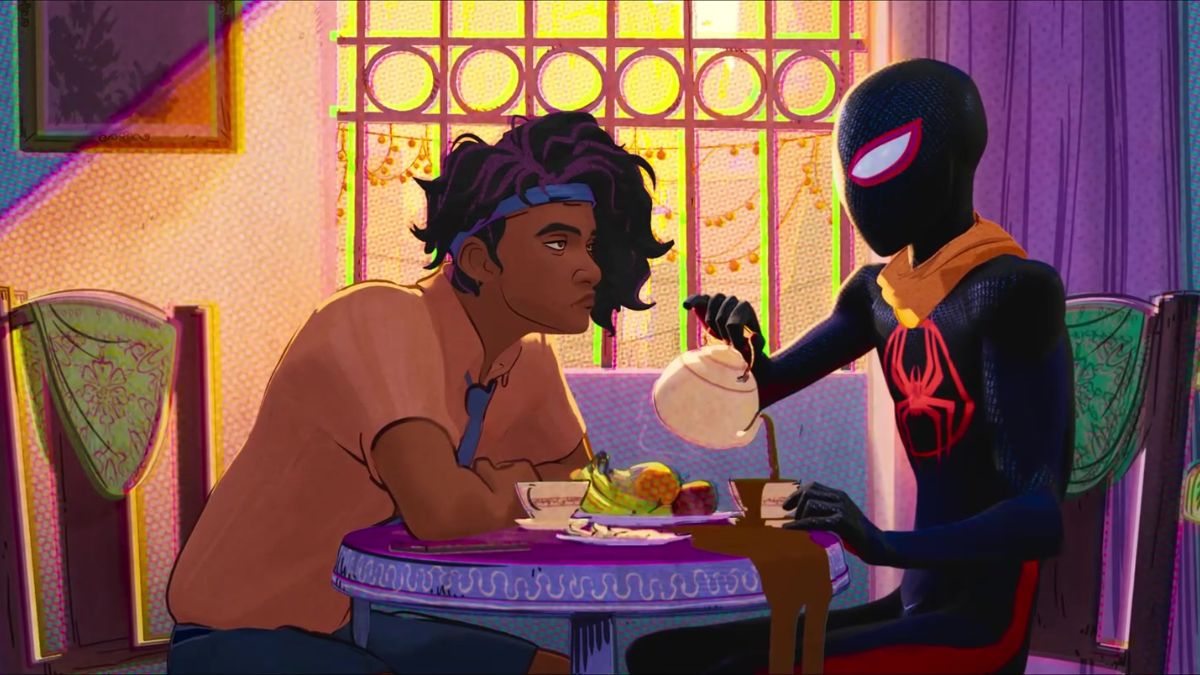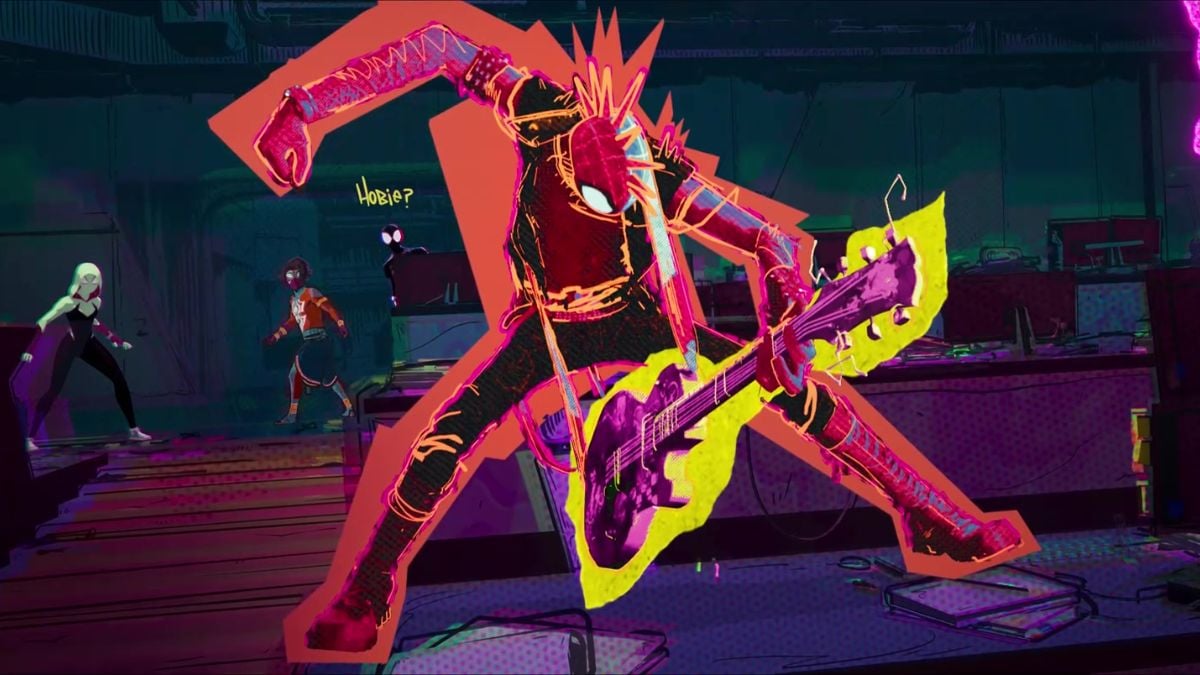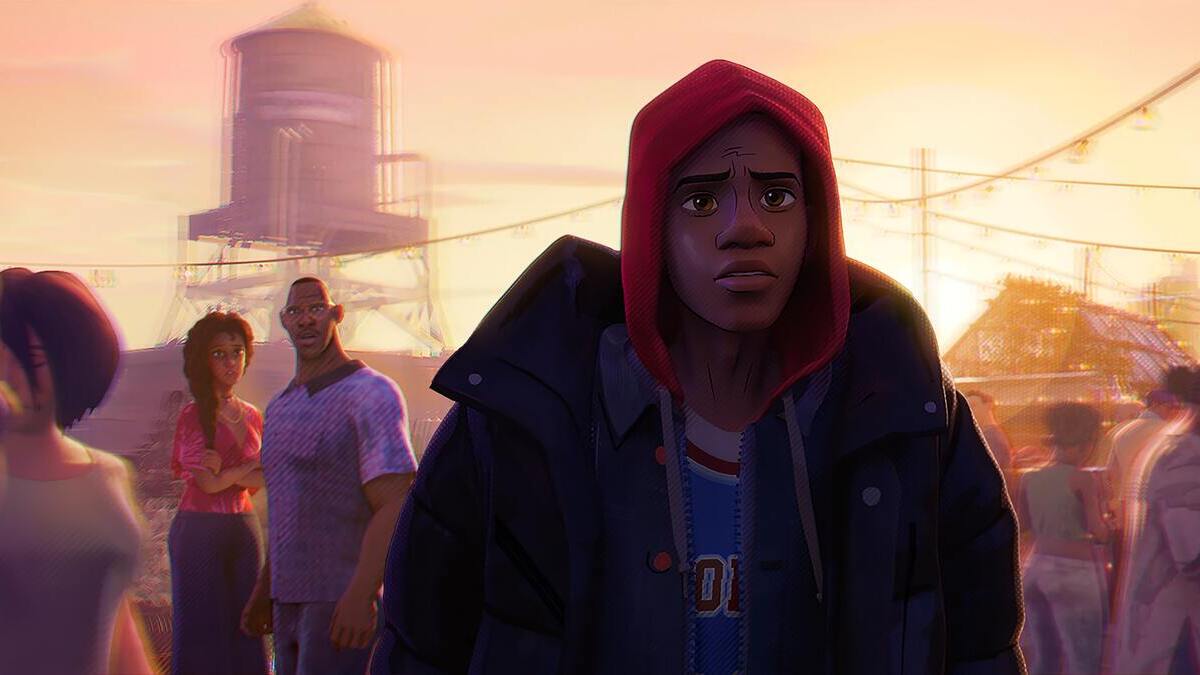Whether intentionally or as the result of poor time management, there are now multiple versions of Spider-Man: Across the Spider-Verse circulating in the ether. Not only were changes made to the theatrical cut following complaints about sound mixing, but with the film landing on VOD, hawk-eyed fans have spotted even more altered details. While this list attempts to be exhaustive, given the dimension of the tweaks, there could be aspects missing.
Camera movement changes during Spider-Society introduction

Changes between the two versions of the film can be as minuscule as a camera movement changing from a simple zoom out to a dolly zoom. That’s what happened during the introduction of Miguel and his strike team early on in Across The Spider-Verse. It’s barely noticeable, but it’s there, adding dynamism to the scene and pomp to the character, as it sets him apart from his teammates in the background.
Lyla takes a bunny selfie with Miguel

As far as A.I. systems go, Lyla is pretty iconic. This small change happens in the scene when Miguel is asking her to call for backup, as she tries to get a “Please” out of him. After achieving her mission, Lyla tells Miguel she had already fulfilled his wishes but had enjoyed watching him ask politely. In the theatrical version pre-audio fix, the hologram lady extends a fist bump, but in the new version of the film she takes a selfie with a bunny filter.
Miguel’s vampiric powers aren’t given as much prominence

During his fight with the Vulture, Miguel comes dangerously close to biting him, revealing his intimidating fangs in the process. In the first version of the film, there’s a lot more build-up to the reveal, as the sharp teeth appear reflected in the Vulture’s eyes for added dramatic effect. In the second version as well as the digital version, that shot was cut.
Spot is less over the top and more conscientious

The main antagonist of Across the Spider-Verse, Spot was also the target of some minor adjustments, including the way he narrates the scene in which he tells Miles about his origin story. His voice is less aggressive than in the original cut of the film. Likewise, when he tries to expand his powers by sticking his finger in a mini-collider and wonders about people possibly getting hurt if it backfires, his line of dialogue is altered from “Eh, what the heck!” to “which would not be good.”
Multiple changes in text boxes

The use of text boxes was also refined. There are multiple examples of this like the complete removal of Miles’ “What?” line (in text or otherwise) in Jonathan’s apartment after Gwen leaves. Later on, at Spider-HQ, when every Spider-person comes up with a pun using Spot’s villain name, the text boxes change from yellow to blue. Miles’ text boxes have always been yellow, so by making blue other Spider-People’s color, he is separated from the bunch.
Also an amazing change is Typeface’s cameo where he tells Spider-Man to go to “Helvetica.” New title cards are added, including “Spider-Man” written in the font from the logo of Sam Raimi’s original trilogy.
Different line deliveries

There are a number of barely noticeable line delivery tweaks, such as Miles’ apology being more humble when Pavitr schools him about the idiotic meaning of “chai latte.” When Miguel talks about the family he used to have in another universe, the line has been changed from “I found another world,” to “I found a world.” Additionally, when Spider-Wolf is running after Miles and the protagonist strikes him, the noise the former makes was also changed to be less of a whimper and more of a grunt.
Hobie’s introduction

Hobie is a stand-out character in Across The Spider-Verse. His big entrance was zhuzh-ed up by adding punk vocals on top of the instrumental. There’s also an additional title card over Miles’ head when he repeats Spider-Punk’s name: “Hobie?” That wasn’t there previously, and it’s theorized it was added because people couldn’t understand the character’s name.
Gwen’s silent in the bridge scene in Mumbhattan

In Mumbhattan — after the classic bridge collapse that happens to every Spider-Man — Gwen runs over to the rubble worried Miles is seriously injured, and pleads “No, no, no. Please, no.” In the digital version, however, she is completely silent. The meaning behind the change is completely up to the viewer.
Ben Reilly’s new line

Another line change happens during the Spider chase when Ben Reilley puts Miles in a chokehold. Initially, he told the hero “This is called the sleeper hold, I’m using my bicep to constrict your-,” which was then changed to “I’ve got you trapped in my well-defined musculature, so don’t even-.” I’m fully speculating here, but I’m guessing the directors reconsidered the implications of choking a young black boy and tried to work around it as best they could.
Miles’ line changes

Two of the most significant line changes understandably come from the protagonist. Right before he transports himself back to what he thinks is his reality, Miles tells Miguel “Sorry man, I’m going home.” This bit was scrapped, making “Imma do my own thing” the last thing Miles tells Miguel.
After transporting, Miles realizes he was sent to an alternate universe instead of his own. This realization used to be made through Miles’ own voice, ringing out in his head. Now, it’s Miguel’s voice that echoes out.
Character design, lighting, and coloring

The animators also reworked the lighting, coloring, and character design in some scenes, particularly some of Hobie’s, as well as Prowler Miles’ reveal at the end of the film. The latter’s appearance was also made a bit rougher, including the addition of more hair to his forehead.
YouTuber Eric Voss also covered the differences in an enthusiastic frame-by-frame comparison.

